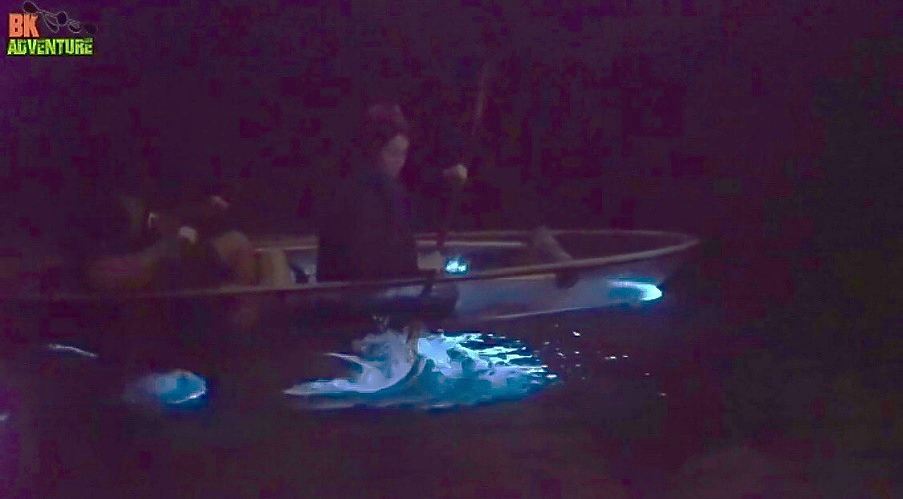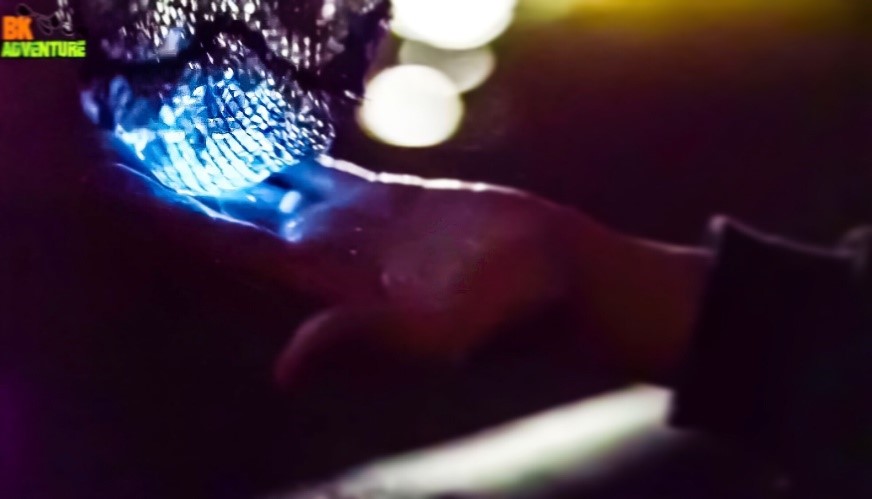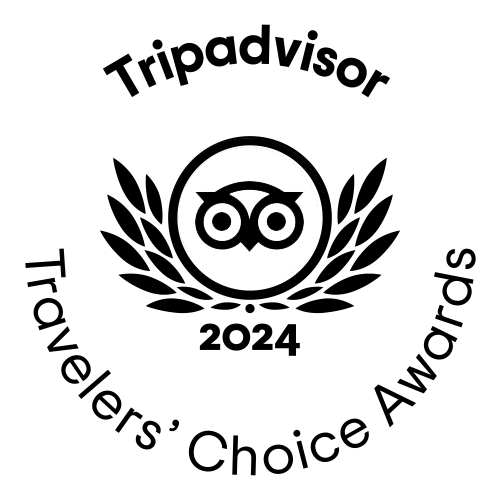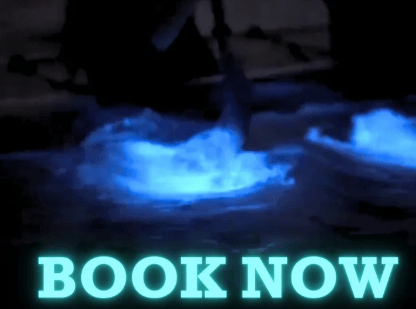Many people believe that bioluminescent waters can only be found in hard to reach, exotic destinations. What if I told you that one of these magical waterways is located on the east coast of Florida? The Indian River Lagoon has been a hot spot for fishing, boating and birding but it is now gaining popularity as prime location to view bioluminescence. The IRL hosts two types of bioluminescent organisms throughout the year.
Dinoflagellates

During the summer, when days are long and the Indian River Lagoon is warm, the dinoflagellates fill the water and cause a blue-green sparkle wherever the water is disturbed. Dinoflagellates are microscopic algae that flourish in warm waters with a low pH balance. They use photosynthesis to absorb the sun’s energy during the day so they can glow at night. When disturbed by means of boats, people swimming, or fish moving through the water, a chemical called luciferin is activated causing a glow.
When in a clear bottom boat, like the one pictured above, the bioluminescent glow can be seen below you. Tour companies like BK Adventure offer nightly excursions lead by local guides in these unique vessels. Check out https://www.bkadventure.com/package/bioluminescent-kayaking-clear-kayaks/ for more information.
Peak Dinoflagellate Season
Dinoflagellate have a peak viewing season that lasts from late May to early September. During these months, the Indian River Lagoon has the right temperature and chemical make up to allow for a brilliant, bright glow. This type of bioluminescence may be visible outside of this season, but the glow may not be as bright or noticeable as during the peak months.
Comb Jellyfish

Don’t let the name fool you, comb jellies are not real jellyfish. These bioluminescent creatures float around in the Indian River Lagoon during the cold, winter months. Unlike typical jellyfish, comb jellies do not have tentacles or stingers and do not hurt you! Instead, they have rows of cilia that propel them through the water.
These jellies are transparent, but when disturbed they flash like a blue lightbulb under the water. The flash of light the jellies emit when touched is not their only bioluminescent attribute. When light travels through their bodies, it becomes scattered and is visible as a rainbow of color. You can see this happen by shining a flashlight at the comb jelly.
Peak Comb Jelly Fish Season
You can see the comb jellyfish throughout the Indian River Lagoon during the winter months. Their peak season lasts from late October to early April, opposite of the dinoflagellate season. During Florida’s colder months, comb jellies can be spotted along shores and throughout the Indian River Lagoon system.
Favorable Conditions
Just like other wildlife, bioluminescent creatures in the Indian River Lagoon but may not be spotted when you go out to do your search. In order to have the best viewing experience, we recommend you have a look during the peak season of each bio season. Venturing out during a new moon helps a lot when viewing bioluminescence because moonlight will drown out light from the water making it more difficult to see.
In Summer 2019 the New Moons Are: June 3, July 2, Aug. 1 and Sept. 28








